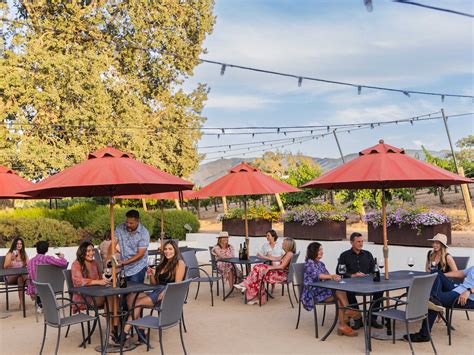The picturesque city of Santa Barbara, nestled between the Santa Ynez Mountains and the Pacific Ocean, boasts a Mediterranean climate characterized by warm, dry summers and mild, wet winters. Understanding the rainfall patterns in Santa Barbara is crucial for smarter gardening, as it helps in selecting the right plants, managing irrigation, and maintaining a healthy and thriving garden. Here are 12+ Santa Barbara rainfall facts to enhance your gardening experience:
Average Annual Rainfall: Santa Barbara receives an average of 18.96 inches of rainfall per year, with the majority of it falling between December and March. This average is significantly influenced by the city’s coastal location, which moderates its climate and contributes to its relatively low rainfall compared to other parts of the country.
Seasonal Variation: The rainfall in Santa Barbara is highly seasonal. The wettest months are typically January and February, with an average of around 4 inches of rainfall each. In contrast, the summer months (June to September) are usually dry, with minimal rainfall. This seasonal variation is characteristic of the Mediterranean climate and has significant implications for gardening practices.
El Niño and La Niña Effects: Santa Barbara’s rainfall can be significantly affected by El Niño and La Niña events. El Niño tends to bring above-average rainfall, while La Niña leads to below-average rainfall. Understanding these broader climatic patterns can help gardeners anticipate and prepare for potential extremes in rainfall.
Record Rainfall Years: The record for the wettest year in Santa Barbara was set in 1983, with a total of 37.33 inches of rainfall. Conversely, the driest year on record was 2007, with only 4.83 inches of rainfall. These extremes highlight the variability in rainfall that gardeners must be prepared to handle.
Drought Cycles: Santa Barbara, like much of California, experiences drought cycles. These cycles can last for several years and have significant impacts on gardening and water management practices. Being aware of these cycles can help gardeners adopt more resilient and drought-tolerant strategies.
Impact on Gardening: The rainfall pattern in Santa Barbara necessitates the selection of drought-tolerant plants, especially for summer gardens. Plants native to the Mediterranean region, such as succulents and certain types of groundcover, are ideal because they are adapted to the local climate conditions.
Irrigation Management: Understanding the rainfall patterns helps in managing irrigation systems more efficiently. Gardeners can adjust their watering schedules according to the time of year and the forecast, reducing waste and ensuring that plants receive the right amount of water.
Soil Conservation: The rainy season is also a critical time for soil conservation efforts. Techniques like mulching and cover cropping can help protect the soil from erosion and retain moisture, benefiting the garden during the dry months.
Rainwater Harvesting: Given the unpredictability of rainfall, rainwater harvesting is a valuable practice in Santa Barbara. Collecting and storing rainwater for use during dry periods can significantly reduce the demand on municipal water supplies and support more sustainable gardening practices.
Microclimates: Santa Barbara has various microclimates due to its terrain, which can affect local rainfall patterns. For instance, areas closer to the mountains may receive more rainfall than coastal regions. Recognizing these microclimates is essential for choosing the right plants and gardening strategies.
Historical Rainfall Trends: Analysis of historical rainfall data in Santa Barbara shows variability over the years, with some decades being wetter than others. This long-term perspective can inform gardening decisions, especially when choosing plants with long lifespans or planning for future climate changes.
Climate Change Implications: Climate change is expected to alter rainfall patterns globally, including in Santa Barbara. Warmer temperatures may lead to more intense rainfall events but also to prolonged droughts. Gardening practices will need to adapt to these changes, incorporating more flexible and resilient strategies.
Urban Rainfall Runoff: In urban areas of Santa Barbara, rainfall can lead to significant runoff due to the prevalence of impermeable surfaces like pavement and roofs. Implementing green infrastructure, such as rain gardens and permeable pavements, can help mitigate this issue, reducing stormwater runoff and improving water quality.
Water Conservation Measures: The city of Santa Barbara and local water authorities often implement water conservation measures, especially during drought periods. These can include restrictions on outdoor watering, incentives for installing drought-resistant landscaping, and programs for water-wise gardening education.
In conclusion, understanding the complexities of Santa Barbara’s rainfall is essential for gardening success. By embracing the unique characteristics of the local climate and adopting practices that conserve water, reduce runoff, and promote resilience, gardeners can create thriving and sustainable gardens that not only enhance the beauty of the city but also contribute to its environmental health.
What is the average annual rainfall in Santa Barbara, and how does it affect gardening practices?
+Santa Barbara receives an average of 18.96 inches of rainfall per year. This availability of water influences gardening practices significantly, including the selection of plants, irrigation management, and soil conservation techniques.
How do El Niño and La Niña events impact rainfall in Santa Barbara, and what implications do these events have for gardeners?
+El Niño tends to bring above-average rainfall to Santa Barbara, while La Niña leads to below-average rainfall. Understanding these patterns can help gardeners prepare for potential extremes in rainfall, adjusting their planting schedules, irrigation systems, and other gardening practices accordingly.
What are some strategies for water conservation in gardening, considering Santa Barbara's rainfall patterns and the potential impacts of climate change?
+Strategies include selecting drought-tolerant plants, implementing efficient irrigation systems, practicing rainwater harvesting, and incorporating soil conservation techniques. Additionally, adopting flexible gardening practices that can adapt to changing climate conditions is crucial for long-term sustainability.
As gardeners and stewards of the land, being informed about the local climate and rainfall patterns is the first step towards creating gardens that are not only beautiful and thriving but also resilient and sustainable. By embracing the challenges and opportunities presented by Santa Barbara’s unique rainfall characteristics, gardeners can contribute to the preservation of this stunning natural environment for future generations.



